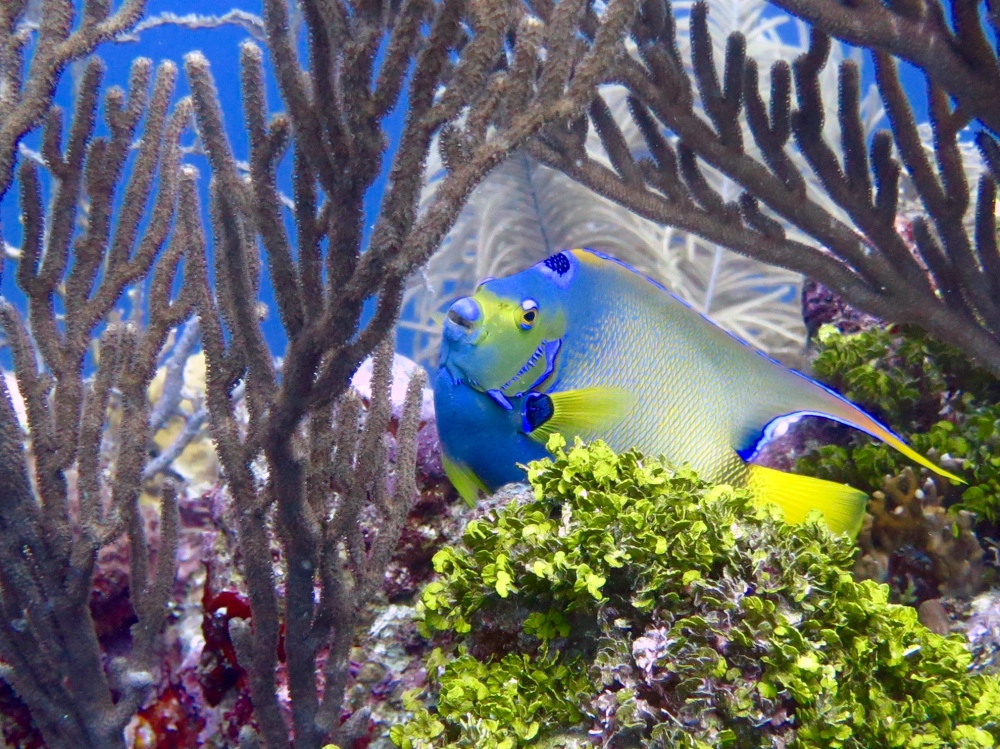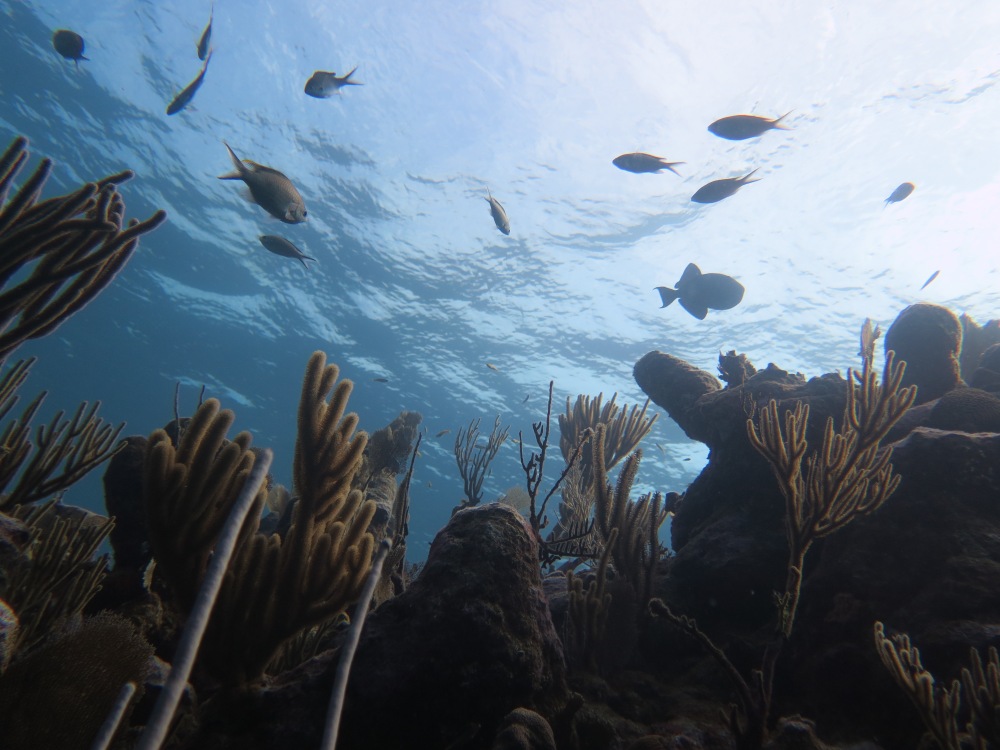
1. How to find the boat.
This is a fairly important skill, especially as a dive guide or instructor, but it was a skill that still baffled me 3 months ago. I’ve become accustomed to the boat finding me and honestly, I got kind of lazy. I’ve done plenty of shore diving and finding the exit point at the end of a shore dive can be challenging but when your following your guide and suddenly the boat appears out of the blue right in front of you, thats magic. Or at least it seems like it at first. After a few months of fine tuning my natural navigation skills I’ve even started to surprise myself by returning directly to the boat at the end of a dive. Anyone can swim in one direction along a wall and then turn around and come back but a good guide will lead people on a route that doesn’t simply backtrack. Taking a route that allows divers to explore different depths and swim throughs around the dive site makes the dive more interesting and they think you’re a magician when the boat appears in out of nowhere during the safety stop. And I mean, when in doubt—pop your head out!
2. Caribbean winter is a lot like BC winter.
Not as cold but just as wet. When people from home ask me how I’m enjoying the sun and the heat they don’t believe me when I say I’m fucking cold! Winter is winter! I was scheduled to take some people diving this morning but instead I am huddled in my bed writing this because the boats aren’t leaving the port. It’s windy and rainy and yucky out there. Okay it’s warm by Canadian standards but when you acclimatize to 30 degree celsius sun shiny days these stormy days hit hard. The water temperature has dropped to a bone chilling 26 degrees. I know it sounds warm but again, when you’re comfortable in 28-29 those few degrees make a huge difference! A 3mm wetsuit doesn’t cut it if you’re diving every day. People say, “oh suck it up you’re from Canada!” Well yes I am. In Canada I have my drysuit, rain gear, boots, blankets, wood stoves and beach fires to combat these conditions. However, the scorching hot classic caribbean days in-between storms do make a big difference.

3. Diving without a computer sucks but can teach you a lot.
My dive computer flooded a few weeks ago. Sad day. I had been here long enough that I was pretty comfortable at all the most frequented sites we use and knew their depths and features. Still, it felt like jumping in blind (which we actually practiced in the IAHD course and I hated it). I suddenly had to rely on other divers a bit more but I also became much more conscious of what I was doing. Instead of glancing at my wrist to check my depth I would pay closer attention to the colour changes as light is absorbed with depth, taking into account how sunny it was and how clear the water was. The visibility here is usually great so I could also make guesstimates by looking up to the surface and watching the columns of bubbles. Instead of waiting for my computer to beep at me to tell me to slow down I naturally ascended slower than usual. I also opted to dive more conservatively in general, not going as deep or staying at depth for as long as I like to. Over a few weeks of diving without a brain on my wrist I learned how to rely a bit more on my own and it made me a much more aware diver but also realized the true value of a good dive buddy.
4. Damaged reefs are very important dive destinations.
I was disappointed when I first got here. I couldn’t believe how obvious the damage to the reef is. Broken, dead and diseased corals, small and rarely seen schools of fish and a shocking absence of larger creatures. I’ve dived in some beautiful places and my first impression of the sites around Utila was underwhelming, however, I recommend every diver come here. Diving here is a constant reminder of how valuable and fragile the ocean’s tropical reefs are. The Caribbean sea is a drain hole for North American agricultural waste and industrial pollution that runs out of major rivers like the Mississippi. Increasing tanker traffic is an increasing threat and discarded plastics are an ever growing presence that drift about as huge garbage rafts. Overfishing and lack of protection for larger animals has pushed many species over the edge of extinction with many more not far behind. And yet, I’ve seen some beautiful things down there. Turtles, cephalopods, sharks, nudibranchs, “odd shaped bottom dwellers,” and all kinds of amazing creatures going about their daily business. The resilience of the reef is constantly astounding to me. You should come see it for yourself!

5. If you come to Utila you will never leave.
Before arriving I had heard tales of people coming here for a week or so and ending up staying for months and even years, I thought I would be immune to whatever spell it is that this place casts on unsuspecting backpackers. I was wrong. A few weeks ago I had every intention of leaving so I booked a flight and started making plans. The closer the date of my departure got the more I realized I really don’t want to leave. Sure I haven’t had power or hot water in my apartment for weeks now. An apartment I can’t really afford to live in I may add. But I’m just not ready. I mean, I haven’t even seen a whaleshark! There’s some wonderful people here who I’m not finished learning from and some bat caves I have yet to explore so I’m not sure what I was thinking just up and leaving. I broke down and paid the fee to change my flight, the conversation ended something like this:
“Thank-you for calling cheapoair is there anything else I can help you with?”
“No thanks…wait, what if I need to change my flight again??”
But I really am leaving next month. Seriously.
fucking awesome – so jealous
LikeLike
You’re in Aus! I’m so jealous!
LikeLike
Love this Carrie….you are so very insightful and respectfully observant about the nature that surrounds you ….and you are discovering more about trusting your own abilities and instincts in the process ….you are much stronger than you think 😉
LikeLike
Reminds me of my experience on Utila! I’d love to be able to navigate underwater too
LikeLike